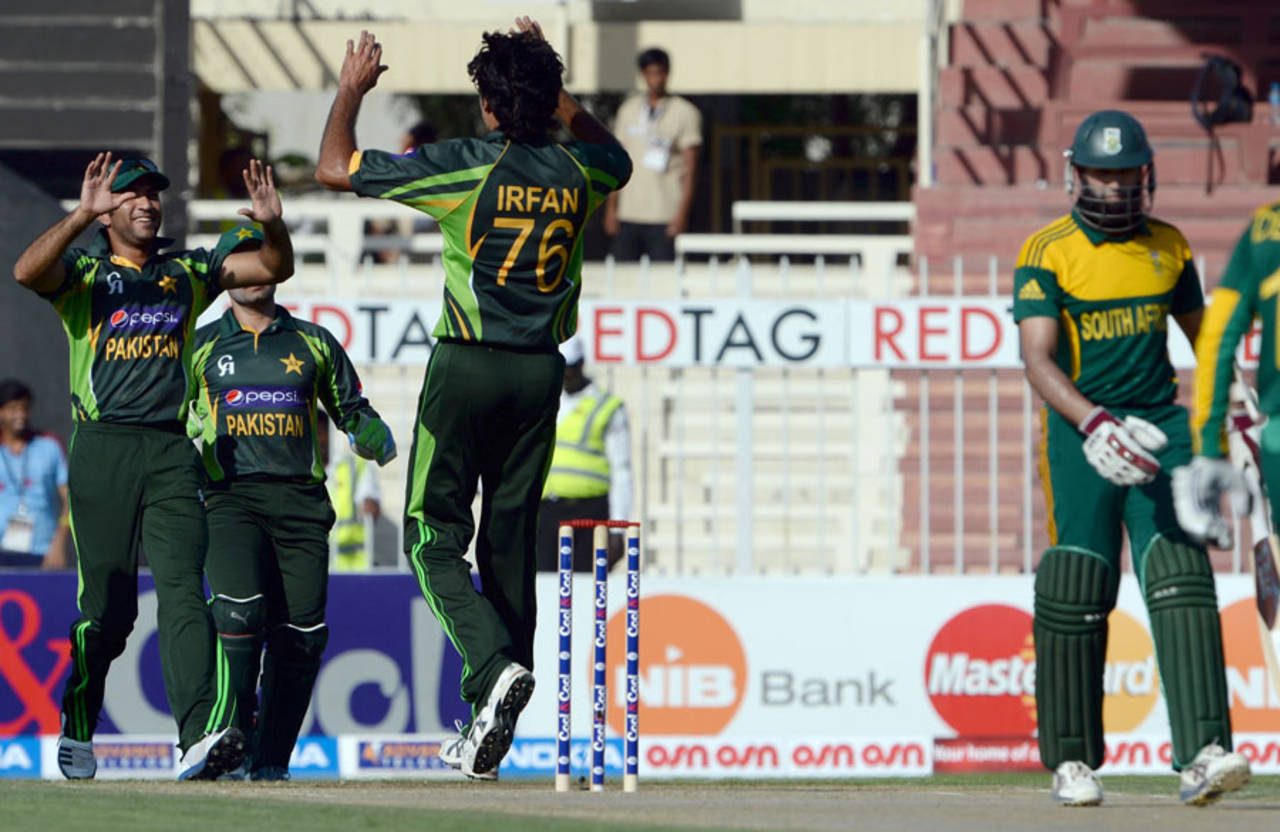Amla's Irfan problem
The South African has been one of the best one-day batsmen in the last five years, but now a tall left-armer is making a dent in his impressive stats

Hashim Amla has been dismissed five times in eight ODIs by Mohammad Irfan • AFP
Hassan Cheema is a sports journalist, writer and commentator, and co-hosts the online cricket show Pace is Pace Yaar. He tweets here